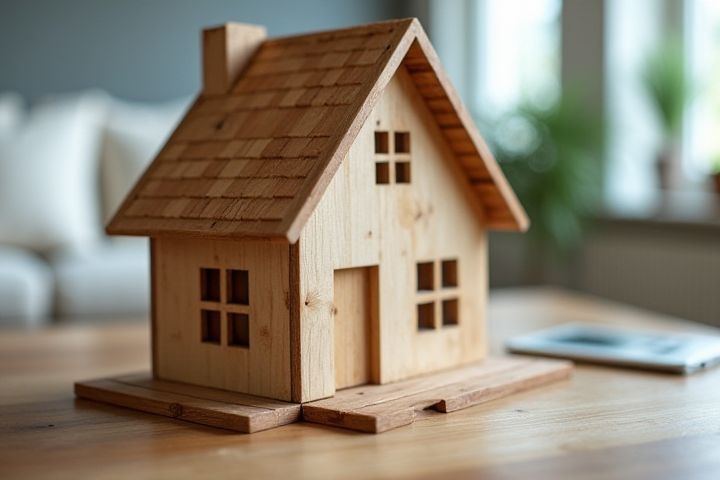
Renovating a house on a budget is entirely feasible with careful planning and resourcefulness. Consider focusing on high-impact areas such as the kitchen and bathroom, where small updates can significantly enhance aesthetic appeal and functionality. Utilizing reclaimed materials or shopping at discount home improvement stores can drastically reduce costs while adding unique character to your space. Embrace DIY projects for tasks like painting, landscaping, or minor repairs, which can save labor expenses and give you a personal touch. Finally, create a detailed budget plan that prioritizes essential renovations while allowing for flexibility to tackle additional improvements over time.
Can You Renovate A House On A Budget
Set a clear budget
Setting a clear budget is crucial for a successful house renovation. Begin by assessing your financial situation and determining a realistic total amount, typically ranging between $10,000 to $50,000 for minor renovations. Break down your budget into categories, allocating specific amounts for labor, materials, and unexpected expenses, often recommended to set aside at least 10% for contingencies. You can maximize your renovation impact by prioritizing essential upgrades that increase home value, such as kitchen remodels or bathroom updates, allowing for better returns on your investment.
Prioritize essential repairs
Renovating a house on a budget involves prioritizing essential repairs, which typically include structural integrity, electrical systems, and plumbing issues. According to experts, allocating 30-40% of your budget specifically for these critical repairs can prevent more costly problems down the line. You should assess the roof, foundation, and windows to ensure they are sound and energy-efficient, as these elements can significantly impact your home's overall value. By focusing on these fundamental areas first, you can lay a solid groundwork for any future cosmetic improvements while staying within your financial limits.
Do-it-yourself for simple tasks
Renovating a house on a budget can be achieved effectively through DIY projects, allowing you to save on labor costs. Focus on simple tasks such as painting walls, which can cost as little as $25 per gallon, or updating hardware on cabinets for an instant refresh without extensive spending. Installing peel-and-stick backsplash tiles, averaging $10 per square foot, is another budget-friendly option that enhances aesthetics without requiring professional help. Lastly, consider repurposing furniture or decor items to minimize expenses and add personalized charm to your renovated space.
Compare contractor quotes
To renovate a house on a budget, meticulously comparing contractor quotes is essential. Collect at least three detailed estimates, ensuring they include labor, materials, and timelines, to identify the most cost-effective option. Focus on contractors who provide itemized breakdowns, allowing you to see where savings can be made without compromising quality. You may find that negotiating the scope of work with your chosen contractor can further reduce costs while still achieving your renovation goals.
Reuse and recycle materials
Renovating a house on a budget can be achieved effectively by prioritizing the reuse and recycling of materials. Up to 30% of renovation costs can be saved by sourcing reclaimed wood for flooring or furniture, which not only reduces expenses but also minimizes environmental impact. You can explore local salvage yards or online marketplaces to find affordable tiles, fixtures, and appliances, often at a fraction of their retail price. Implementing DIY techniques to refurbish old items, such as repainting cabinets or reupholstering furniture, can breathe new life into your space while keeping costs low.
Opt for cost-effective materials
Opting for cost-effective materials is crucial when renovating a house on a budget. For example, using laminate flooring instead of hardwood can save you up to 50% on material costs while still providing an attractive finish. When it comes to countertops, consider quartz or recycled glass options, which can be 30-40% less expensive than natural stone without compromising style. By selecting affordable alternatives like these, you can achieve a fresh, updated look for your home while keeping renovation expenses in check.
Plan renovations in phases
Planning house renovations in phases is a strategic approach that helps you manage your budget effectively. Start by assessing the essential areas needing immediate attention, such as structural repairs or safety upgrades, which should take priority in your budget allocation. Allocate around 30% of your total renovation budget for these primary needs, leaving room for cosmetic updates in later phases. By breaking the project into manageable parts, you can tackle one area at a time, ensuring quality work without the stress of overspending.
Source materials during sales
Renovating a house on a budget is possible by strategically sourcing materials during sales and discounts. Retailers frequently offer seasonal promotions, clearance events, and holiday sales that can significantly lower costs on essential supplies like flooring, fixtures, and paint. You can also explore online marketplaces and local resale shops for surplus materials or gently used items, which can provide high-quality options at a fraction of the retail price. By carefully planning your renovations around these sales and using creative alternatives, you can transform your home without overspending.
Consider energy-efficient updates
Renovating a house on a budget can be effectively achieved by focusing on energy-efficient updates that reduce long-term expenses. Installing energy-efficient windows and doors can enhance insulation, lowering heating and cooling costs while increasing comfort. Upgrading to LED lighting and Energy Star-rated appliances not only conserves energy but also significantly reduces electricity bills. Incorporating smart home technology, such as programmable thermostats, allows you to optimize energy use, making your home both cost-effective and environmentally friendly.
Limit structural changes
Renovating a house on a budget can be effectively achieved by limiting structural changes, which often account for a significant portion of renovation costs. Keeping existing walls, plumbing, and electrical systems intact allows for more financial flexibility, with average costs for structural modifications ranging from $1,000 to $15,000 or more depending on the scope. Instead, focus on cosmetic changes like painting, new fixtures, and flooring upgrades, which can transform your space for as little as $500 to $5,000. You can maximize impact while staying within your budget by choosing cost-effective materials and DIY options whenever possible.
